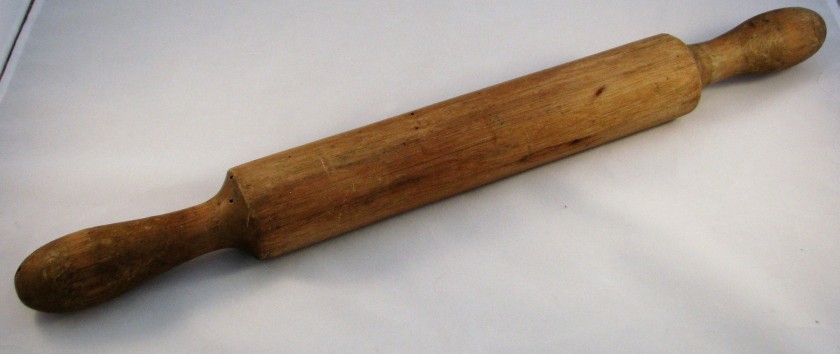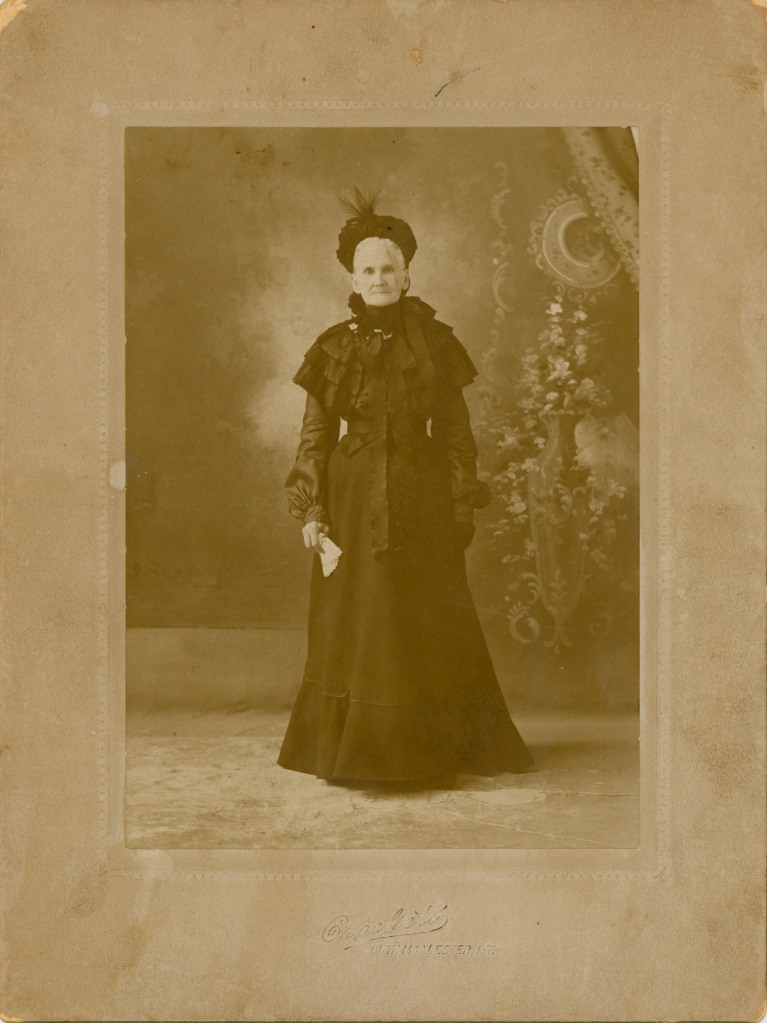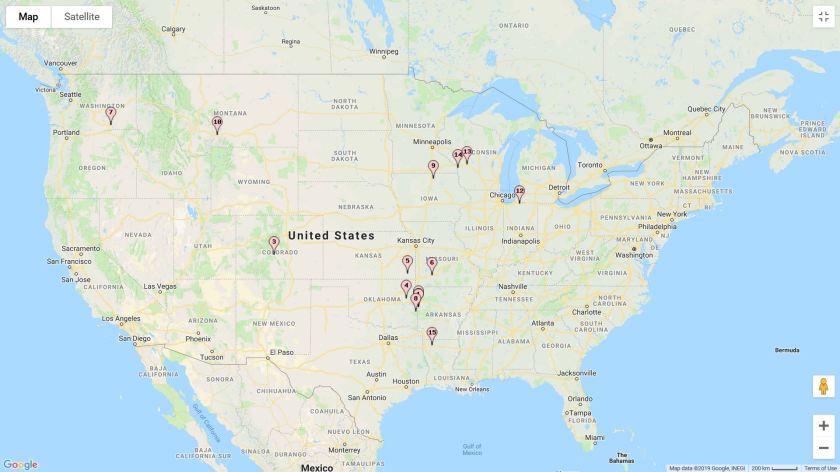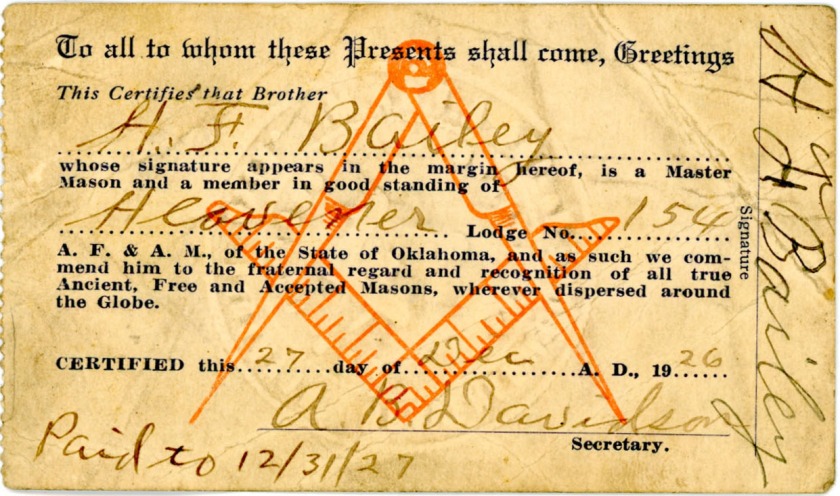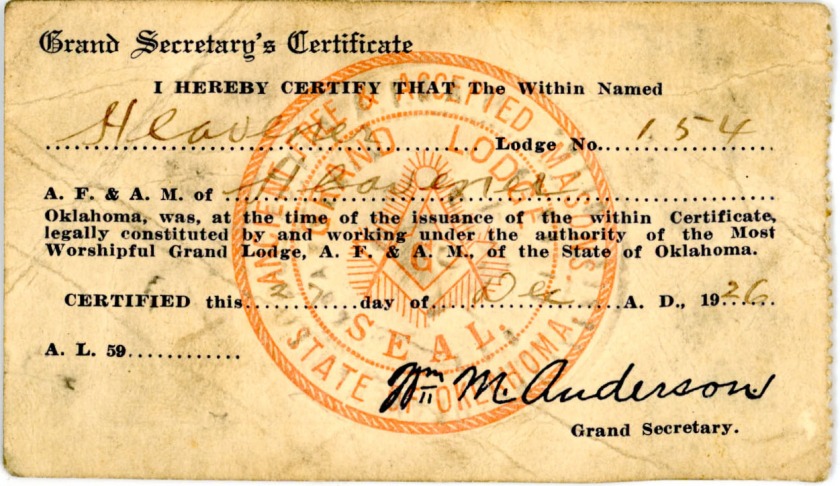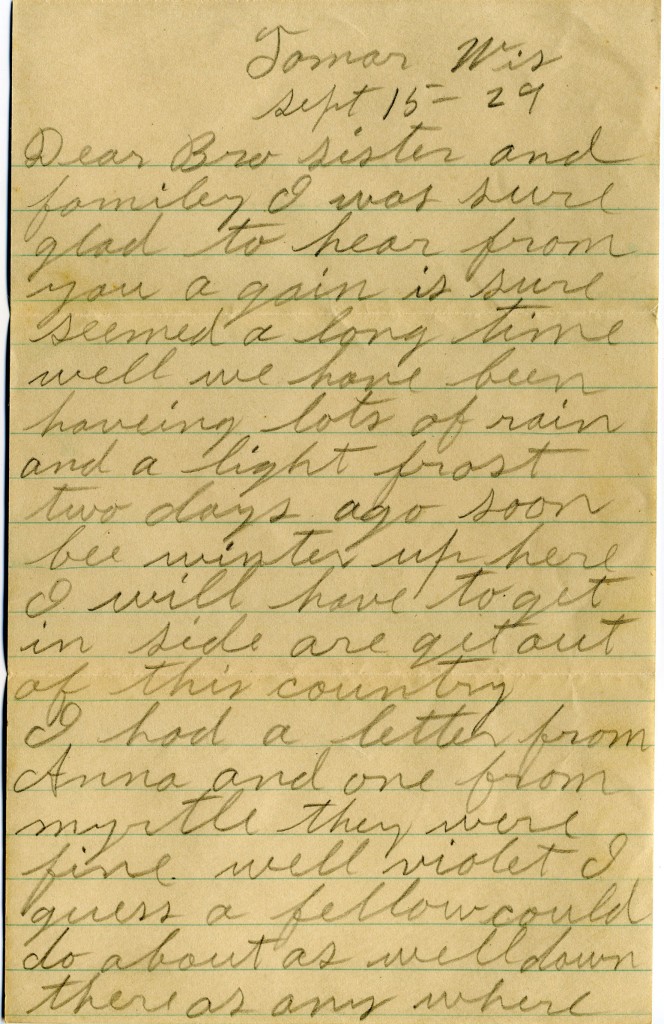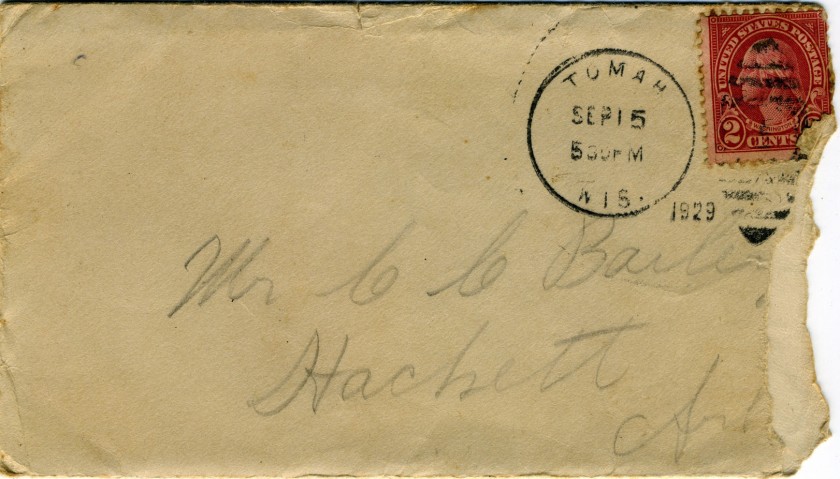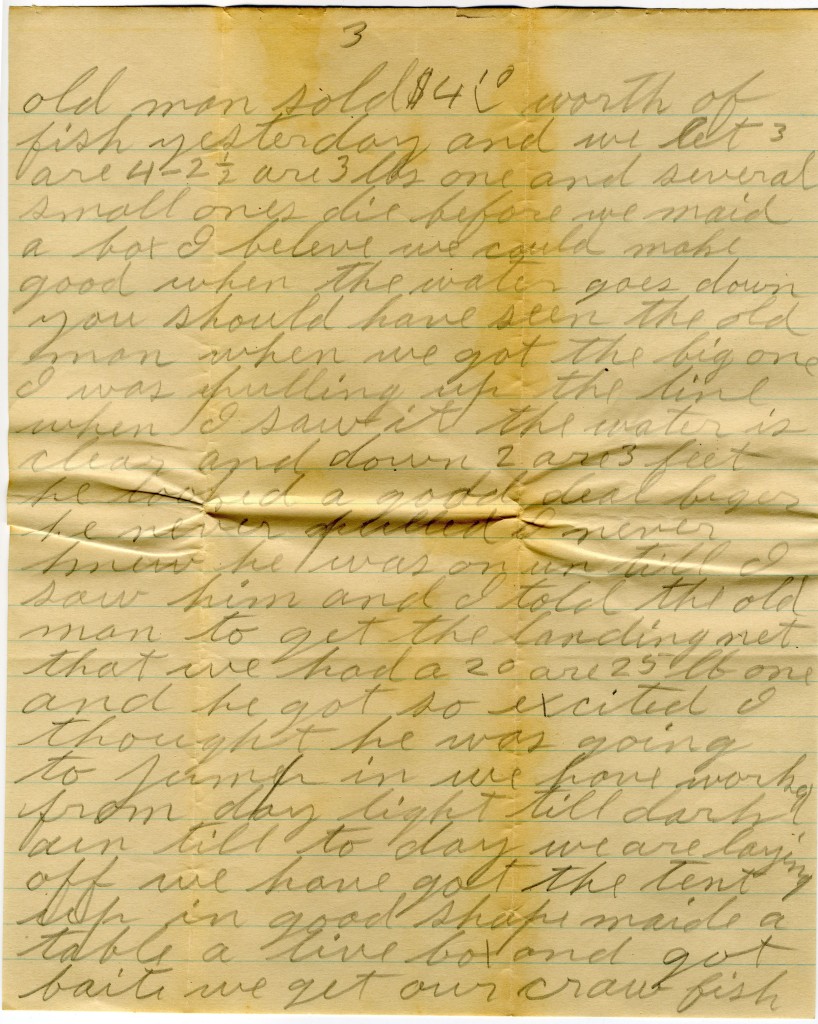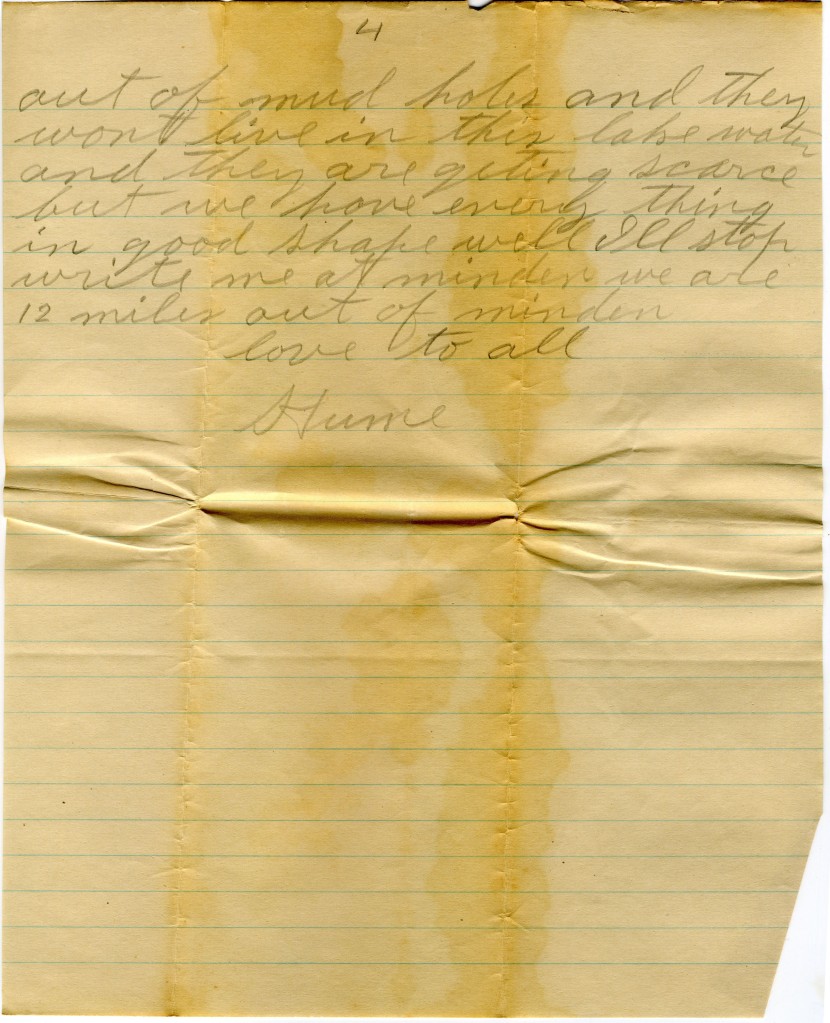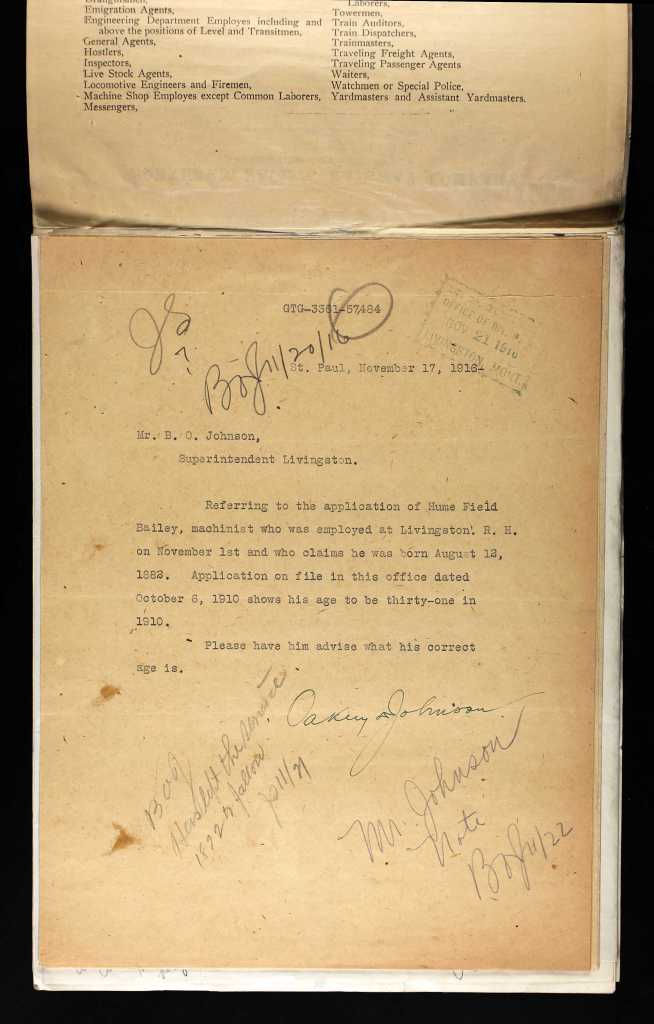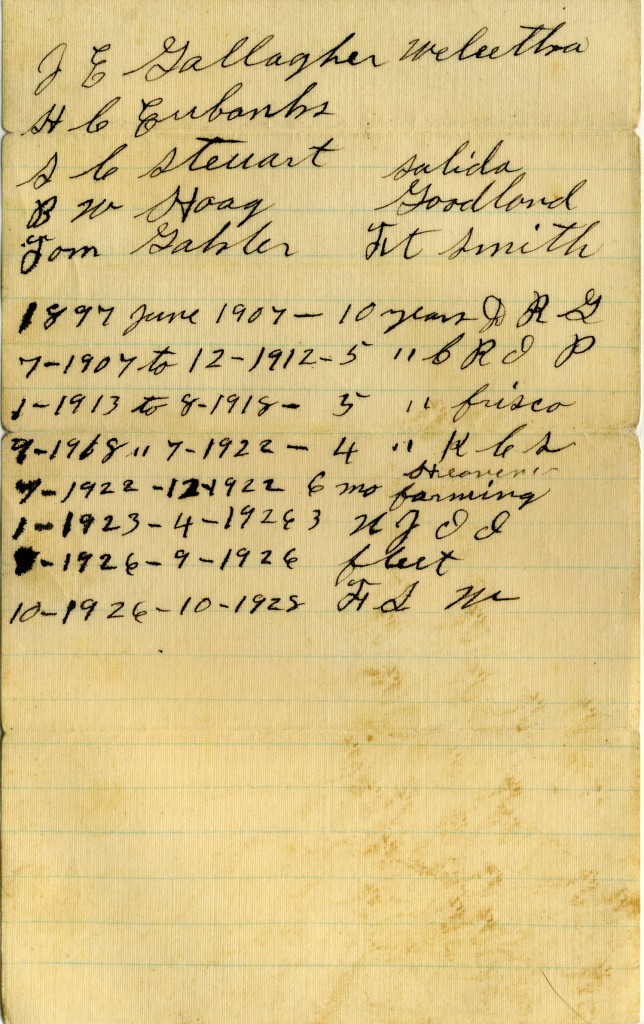Legend – 52 Ancestors in 52 Weeks
Nearly every family has some sort of legend. There’s the Indian Princess legend. We’ve got that. Busted! There’s the legend of the three immigrant brothers who went north, south, and west. We’ve got that several times. Also busted! There’s the legend of grandpa getting his name changed at Ellis Island. Not so much for us, since my folks all came before that and all came into the southern Colonies.
Some families have legends around food or recipes. Some have legends around things that get passed down. For us, we wrap both of those together. We have “the rolling pin”. This rolling pin has come down through the family for over two hundred fifty years.
My grandmother, Susan Louise Bailey Dickson, told me that it was made before 1760 out of a single piece of apple wood. It’s clearly hand carved, uneven and imperfect. It’s not the sort of rolling pin that has an axle. It’s solid and you roll the whole thing. But it’s also not like some rolling pins used for fancy bread that lack handles.
I thought that it had come down through Grandmother’s Bailey family, but she corrected me and said that it came down through the family of her grandmother Sarah Louise Council. (There’s another story about why Grandmother and her grandmother shared a middle name, but that’s for another day.)
So, could the legend of the rolling pin coming down through this family be true? If it were, where would it have come from? I don’t see any reason to believe it could not be that old. It’s clearly old. And if Grandmother’s grandmother said it came down through her family, then it certainly went at least back 150 years.
Sarah Louise Council was born in 1837 in Alabama, probably in Jackson County, between Huntsville and the Georgia border. She was the daughter of Uriah Allison Council and Louisa Anna Green. Louisa has remained a mystery to me, but I have recently been trying to find out more about Uriah and his family.
Uriah Allison Council was born in 1807 in Knox County, Tennessee. Tracing out the deeds, tax lists, and other court records, we find that he stayed in Knox County until about 1833 when he moved to the next county over, Roane County. By 1840, he is in Jackson County, Alabama and by 1842 is a Justice of the Peace there. By 1850, he had moved to the next county west, Madison, and is a school teacher. FindaGrave says that he died in 1851. I have not found a good record for either his death or Louisa’s death. But by 1860, the three surviving children are all in Sebastian County, Arkansas and there is no sign of Uriah or Louisa. This is another place to go research. My guess is Louisa had family in Arkansas and went to them after her husband died.
We believe, as have many Council researchers, that Uriah Allison Council was the son of Isaac Council and Susan Allison. To date, I have not found any solid documentary evidence. But, there is a lot of circumstantial evidence: Isaac and Uriah lived next door to each other for a lot time. When Uriah moved to Roane, Isaac bought his land. Susan Allison (Uriah’s supposed mother) had a brother named Uriah Allison. Plus a whole lot more. This is something that I need to write up.
Isaac was born in 1785 in North Carolina. That’s not quite 1760 yet, so we really need another generation for this legend to completely ring true. We are not sure where in North Carolina he came from or who his parents were. Digging through the tax lists and deeds of Knox and Roane Counties, my current hypothesis is that Jesse Council is the father of Isaac, John, Matthew, Hodges. I think his father was likely Hodges as well. If this is the case, this Jesse was likely born in Virginia and served in the Revolutionary War. I’m working hard right now to figure out and prove what I can about Jesse and the other Councils in East Tennessee.
But, it seems to me that the legend of the rolling pin has a lot of truth to it.
But that’s not really what I remember about the rolling pin. To me, the legend that I tell about the rolling pin is of having breakfast at my grandparents’ house. We would often have breakfast at the dining room table. There, she could pull the toaster oven right up to the table. As we ate biscuits, Grandmother would roll out a few more with the rolling pin and pop them into the toaster oven. We would eat fresh, hot biscuits with real butter and strawberry freezer preserves until we could hold no more or until she ran out. Grandmother believed that the rolling pin ought to be used. No reason to have a dead legend when it can continue to have a life and a story. (The only reason my wife and I don’t use it is that she’s vegan and it has 250 years of lard rolled into it.)
My big challenge is how to make sure that the legend does not end with me and that it has a story in my Bailey family after me. My cousin, who had it for several years, passed it to me because he had no biological children. But, neither do we. My task is to find the next steward of the rolling pin so its legend continues for another 250 years.

